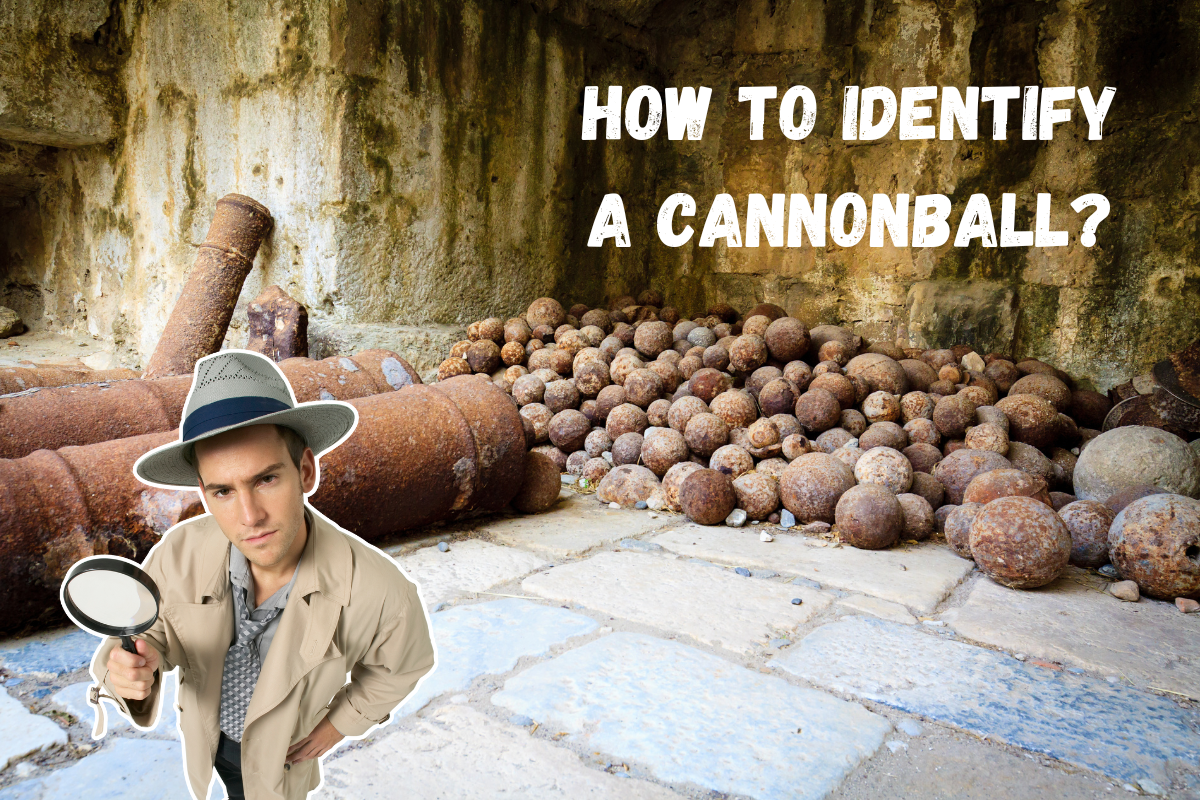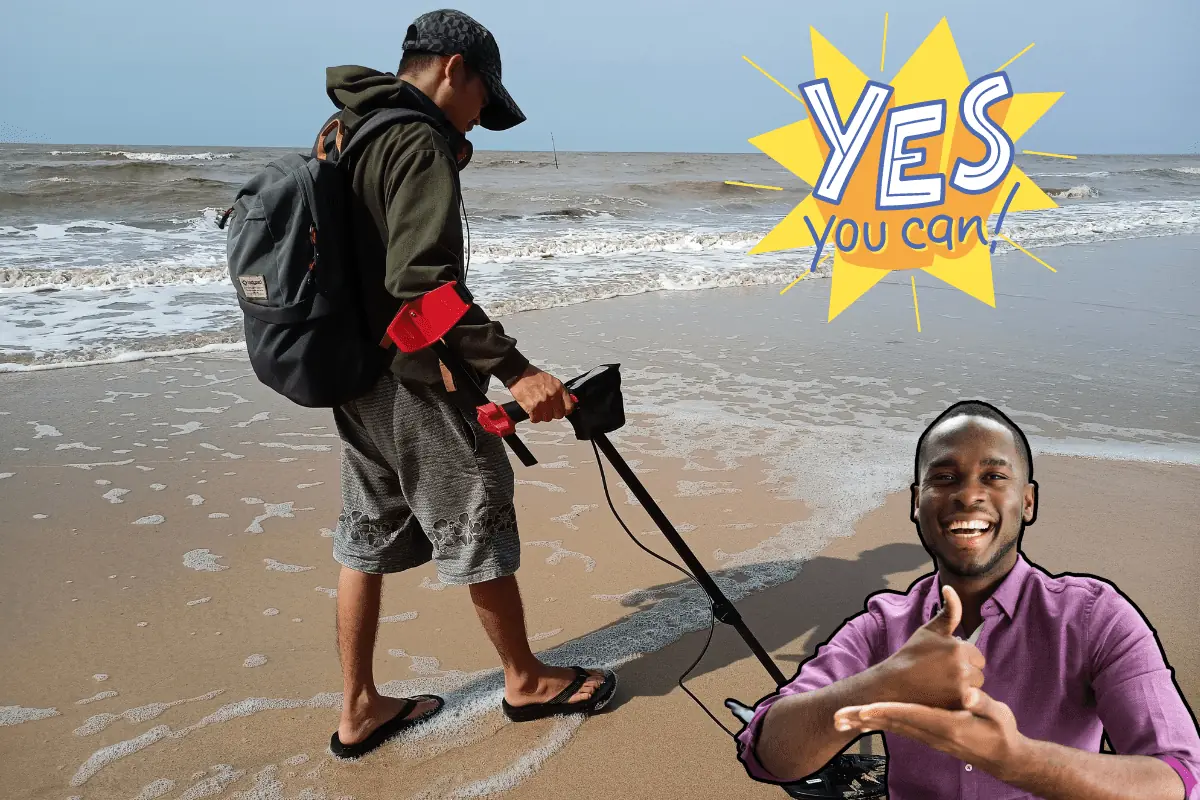You might be new to this dirt fishing lifestyle. If you are, it’s normal to have a lot of questions.
One that seems to be asked a lot is, can you use a pinpointer instead of a metal detector?
Honestly, you’re asking a good question. Many experienced Diggers know the ins and outs of their tools.
More importantly, they know their capabilities and limitations.
You’ve probably seen mixed answers to this query, but that ends today.
I’m going to give you the proven facts and the common sense answers to your pinpointer questions.
Are you ready?
Only a Pinpointer for Metal Detecting: Can You Do It?

No, you cannot use just a pinpointer to metal detect.
Due to the amount of ground you have to cover and the need to detect deeper, using just a pinpointer would be foolish and a total waste of time.
Now, I’m sure someone out there is bragging about the time they found some kind of rare collectible by only using their ‘carrot’.
Ok, smarty pants.
Let’s talk facts.
Can you go metal detecting with just a pinpointer?
Yeah, sure. Technically you could.
But who would do that? And why?

A pinpointer is a tool meant to give you an advantage in situations where your regular metal detector might not be as effective.
Why would you want to use only a pinpointer when you can use both?
The answer is, you wouldn’t want to. It doesn’t make sense.
Now that we’ve got that out of the way, let’s move on and talk about some of the differences when it comes to a pinpointer vs a metal detector with a stem.
Pinpointer vs Metal Detector
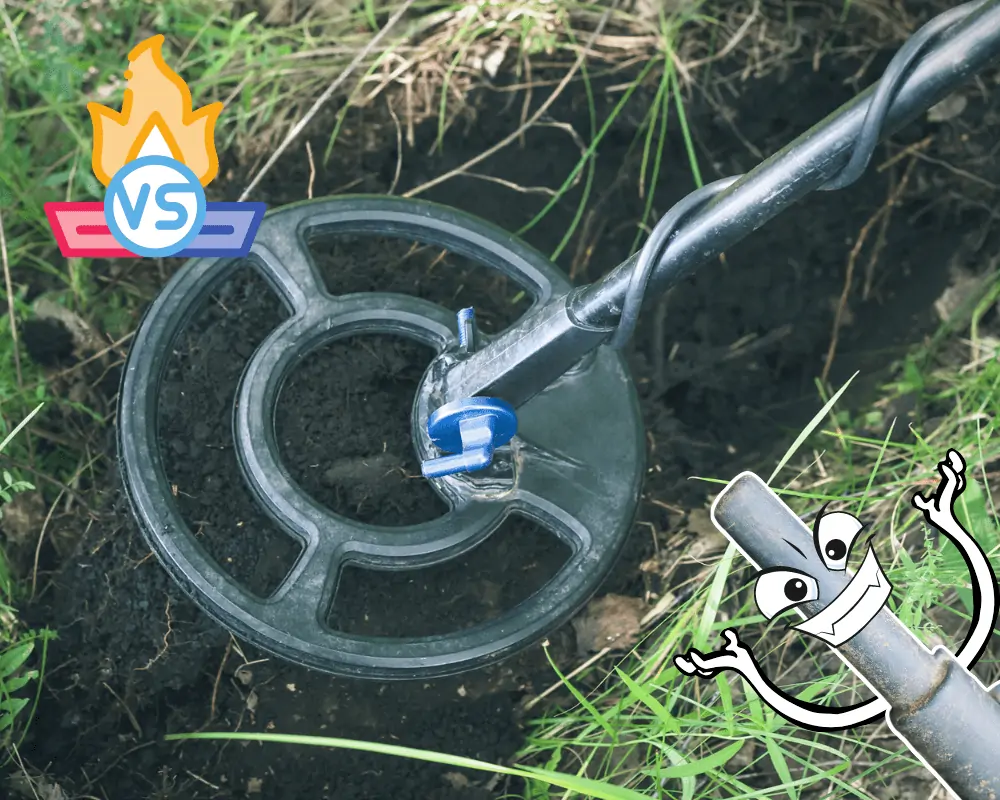
The difference between a pinpointer and a metal detector comes down to a few key factors:
- Depth
- Size
- Weight
- Ease of use
- Intent
For a deeper look, let’s break them up individually.
Pinpointers
First up, you need to know what a pinpointer is. Learning about their technology will help you understand how and why you would use one.
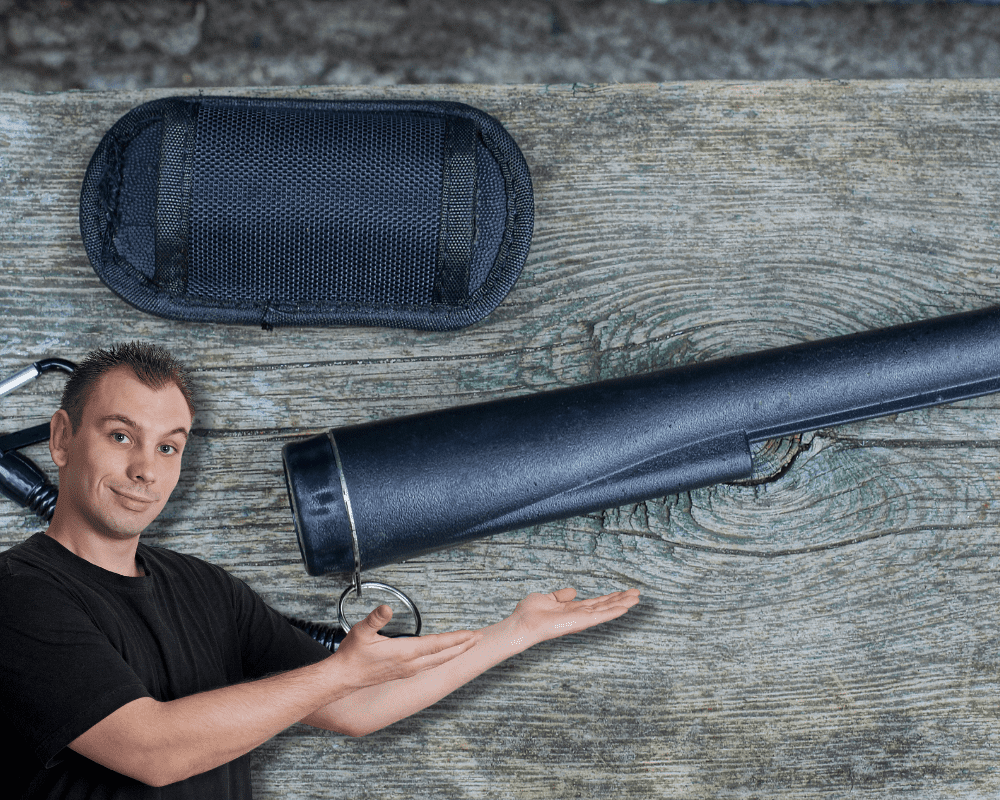
A pinpointer is a handheld device that helps you zero in on your target. It’s like having an extra set of eyes (or in this case, an extra set of ears) to help you find what you’re looking for.
They are small, lightweight, and easy to carry around with you. You can even put them in your pocket!
Most pinpointers have two modes: audio and vibrate.
The audio mode will emit a beeping sound that gets faster the closer you get to your target.
The vibrate mode will do the same, but instead of a beep, it will vibrate.
Some pinpointers even have a LED light built into them, making your search even easier.
Metal Detectors
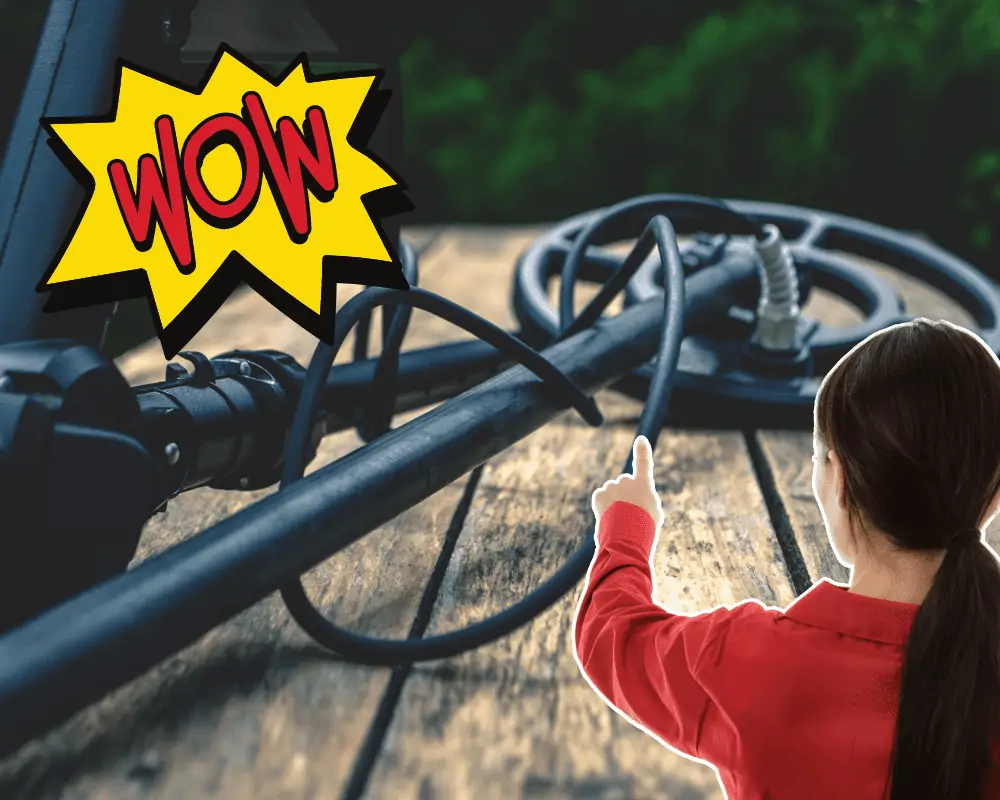
On the other hand, metal detectors are larger and heavier. They also have a stem (usually between 40″ to 60″ long) that needs to be held in front of you as you scan the ground.
This is why metal detectors are best used when you have a lot of ground to cover.
They can also go much deeper than pinpointers, making them ideal for beaches and other watery areas.
The reason for the stem is so that you can keep the coil away from your body. This helps reduce false positives from things like coins in your pocket or belt buckle.
Don’t count their weight and size against them. With the increase over pinpointers, you get some pretty advanced features that a pinpointer just won’t have.
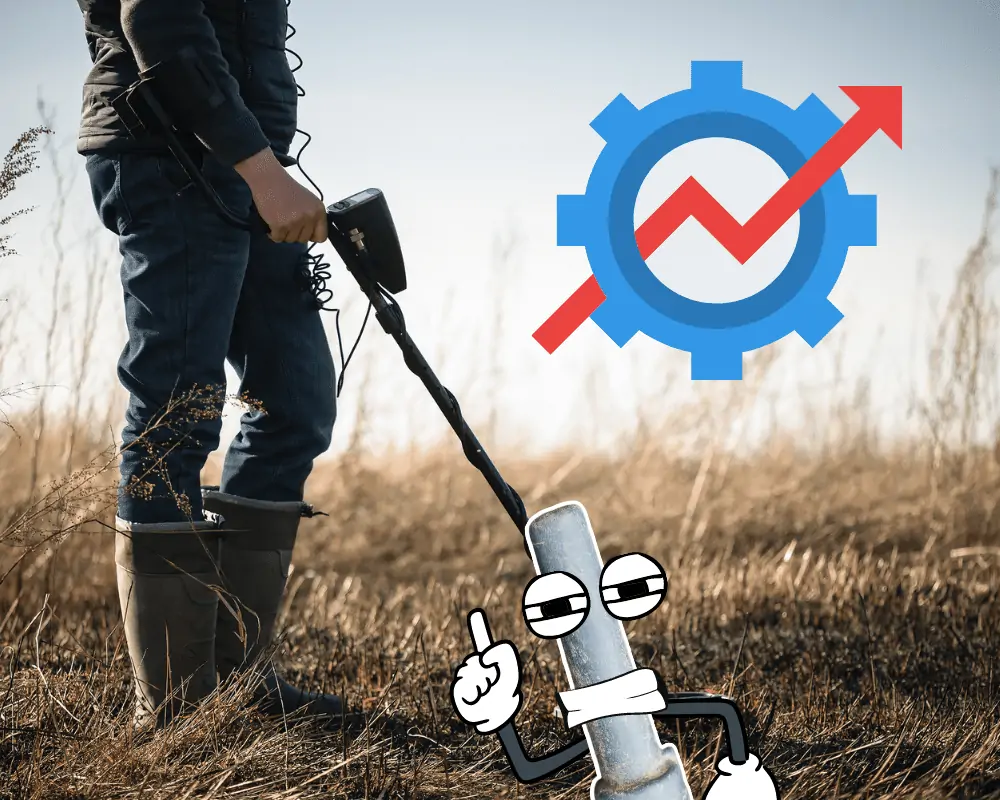
This includes things like Target ID and selecting multiple search modes. Even custom modes can be stored in the memory of your metal detector.
You will also notice the difference in price. While you can get models of both a pinpointer and metal detector for under $100, most metal detectors with a stem will be far more expensive.
I could go on and on about the differences between pinpointers and metal detectors, but I think you get the idea.
They are two very different tools meant for different purposes.
While regular metal detectors are perfect for a more large-scaled approach to hunting metal, I like to take a different view.
These two devices work well with each other. By using both, you give your detecting technique a well-rounded advantage.

You could argue the pinpointer is far less important.
But have you tried detecting along the edge of a river, when it’s nothing but rocks and boulders for at least a mile?
You’ll be glad you added your Garrett Pro Pointer to your metal detecting arsenal.
If you have a Garrett metal detector with a stem, you know how well they perform.
Where and When to Use a Pinpointer?

Speaking of cramped spaces and hard-to-reach targets, when should you use your pinpointer? Since you agree (right??) that it’s better not to use one all by itself.
I’m betting you could come up with a lot of different scenarios that call for this smaller search coil.
Well, let’s look at just a few of the more common examples when pin pointer targeting is needed for a treasure hunter.
Target Recovery
Target recovery is a little broad. But that’s kind of the point.
There are tons of times you might find you need a more unique precision location on small targets.
You’ll need your pinpointer when digging a hole and the search coil of your full size metal detector is too big.
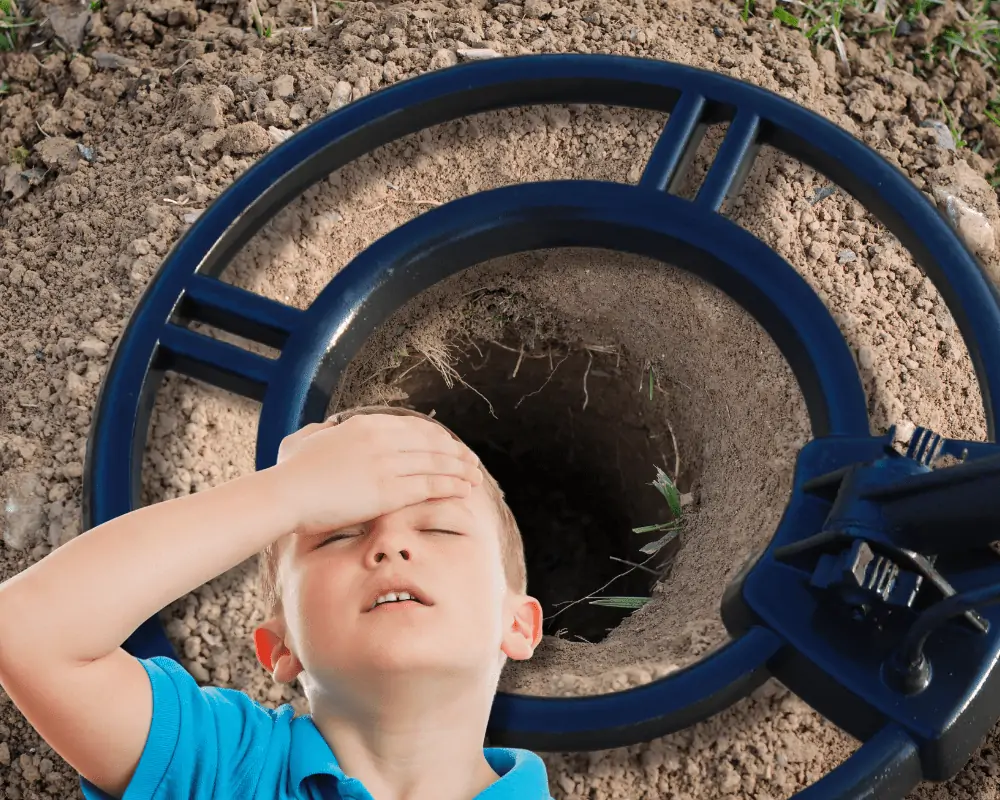
Or, maybe your detector coil is beeping like crazy but you can’t find a single thing. You’ll have better luck finding the exact location with a metal detecting pinpointer.
The list goes on and on.
The smaller the space or more elusive the target, the bigger the need for a quality pinpointer.
Shallow Target
Sometimes you’re just that lucky person who stumbles upon a buried treasure just below the surface.
You’re on the beach with your Bounty Hunter Tracker IV and sand scoop. You’re picking up signal after signal of shallow target metal.
It’s gotten to the point where you don’t even think to dig deeper. Because each time you start looking, a new coin or trinket is uncovered.

So what do you do?
Save yourself the extra weight of your other tools and pull the Fisher F Pulse (see here) out of its belt holster.
Precisely isolate your target’s location. And pull those gold rings or misplaced quarters from the sand.
Cleaner Plugs
Whenever you find yourself treasure hunting and you stop to dig up a strong signal, be considerate of the land you’re on.
Most, if not all Diggers know to carefully cut out clean plugs. It allows you to cover your tracks by placing the soil and grass back as it was.
And it shows some respect to the land owner and other visitors who may pass by.

As you can imagine, this is a lot easier said than done if you’re a beginner. Especially when you’re anxious to get to your target and see what’s causing that beeping sound.
This is the perfect scenario for a pinpointer. By using one, you make it much simpler to replace the plug exactly as it was found.
Instead of a big patch of missing grass, you’ll have a small, neat hole.
You might be thinking, well this is all great! But I’m pretty sure metal detectors come with a built-in pinpointer.
Well…in the next section, you’ll get your answer.
Do Metal Detectors Come With a Built-in Pinpointer?
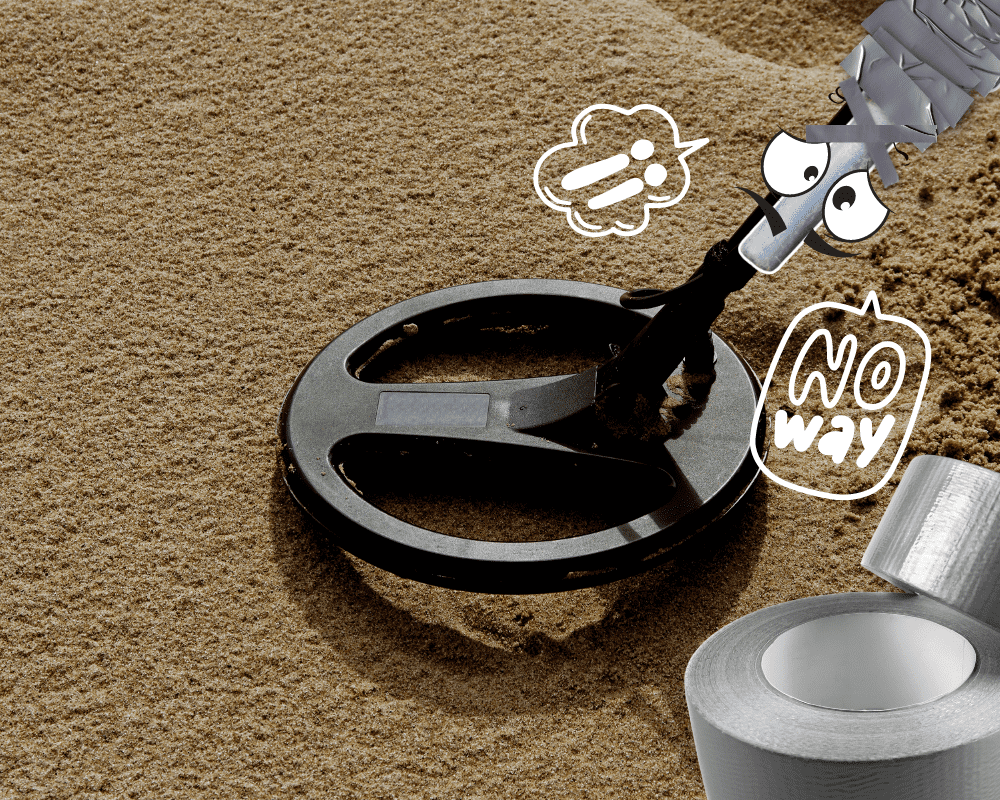
Yes, some metal detectors come with a built-in pinpointer, but you are still limited by the size of your search coil.
For example, the Minelab Equinox 800 is a top-of-the-line metal detector with all the features you could want or need.
Including a pinpoint mode.
However, all it does is beep faster as you get closer to a target.
There are no sensitivity settings to adjust your detector coil to better locate targets you want.
Not to mention, you probably have an 11-inch search coil on your Nox.
The only way that pinpoint feature is paying for itself, is if you dig a hole a foot wide!

No thank you.
By now, you see the benefit of having a pinpointer, but not just a pinpointer, right?
I’m assuming you said yes.
In that case, drop down to the next few sections to learn more about what a pinpointer can do to up your treasure hunting game
Can a Pinpointer Find Gold?
Does a pinpointer detect gold?
Yes, pinpointers can find gold.

In fact, a pinpointer is an essential tool for any gold prospector.
While you can use a full-size metal detector to find gold nuggets, it is much easier and more efficient to use a pinpointer.
This is because those small gold nuggets are often extremely tiny and difficult to locate.
And the top portion of this handheld pinpointer has a detecting coil that allows 360 degrees to detect metal objects. Unlike the Vibra Probe, which only detects at the tip.
What you should keep in mind is that a pinpoint for detecting gold will have a more limited depth than a standard metal detector.
But we’ll get into that in a bit.

However, most pinpointers will detect gold that is larger and closer to the surface without interference needed from you.
To find the smaller flakes or nuggets, you’ll have to make a sensitivity adjustment.
If you’re looking for a good quality pinpointer for gold and have the option to adjust sensitivity levels, look no further than the Garrett Pro Pointer AT.
The Garrett Pro Pointer AT might be the most popular model available. Not just for gold, but for any treasure hunter in need.
They’re powered by AA batteries, detect gold with accuracy, and have a one button power operation.
And if you’re willing to spend a little more money, you can start using a pinpointer like the Z-Lynk version that lets you connect to wireless headphones!
I should mention before we move on, that there is one more alternative. A real pro pointer.
The Falcon MD20 is more of a probe than an actual metal detecting pinpointer.
But it will serve the same purpose and then some.
The biggest advantage is that it can detect gold particles that other devices can’t.

So, if you want to take your gold prospecting game to the next level, this is a great option.
Just know that it doesn’t come cheap.
For that boost in frequency for gold detection, you’ll have to pay for it.
Are Pinpointers Waterproof?
Using a pinpointer underwater is a great way to find lost jewelry, and detect targets like a half dollar coin or some other metal object.
But can a handheld pinpointer for metal detecting be made to be water resistant?

Absolutely!
The good news is that most pinpointers on the market today are waterproof. Whether it’s the best pinpointer or some knock-off brand you never heard of making a look-a-like, cheap pinpointer.
It’s become an almost expected feature.
And don’t worry about any short circuits. Their power source (alkaline batteries) are safe and secure.
If your metal detector pinpointer is waterproof, it should have an IP68 rating. Meaning, that it can withstand being submerged in water without being prone to leaks.
How Deep Can a Pinpointer Detect?

While pinpointer metal detectors are not as deep seeking as a metal detector with a stem, they can detect targets up to 3 or 4 inches, on average.
However, some models boast a target depth range of 10 inches or more.
Personally, I’ve felt pretty happy reaching small targets at 6 inches when using a pinpointer.
It may require some adjustable sensitivity. But a quality pinpointer should be capable of testing the limits.
If you’re trying to find a metal object deeper than that, just go back to using your regular metal detector.
How Do I Choose a Pinpointer?

Choosing a pinpointer (and not as just a detector), requires you to evaluate how you plan on using a pinpointer.
Where do you like to go metal detecting? How often will you be using it?
Do you need a waterproof pinpointer? Or do you find yourself using the maximum sensitivity level?
These are all questions that will help you determine what it is you need. And more important, what you don’t need.
For some more help, check out my post on metal detecting headphones.
I cover the 5 pillars of making a decision. Those same pillars should help you with your metal detecting pinpointer confusion.
How Do You Use a Pinpointer Metal Detector?

Assuming you’ve already read the user manual.
Using a pinpointer is not all that different from metal detecting with your regular metal detector. The difference is you’re getting a precise location by searching with your pinpointer directly in the dirt.
But, if you’re like me, reading a manual is like transcribing the Dead Sea scrolls.
So let me help you out with a quick pinpointer tutorial.
You’ve found the general area of a target when metal detecting. You’ve dug your hole and set your plug aside. Next…
- Turn your pinpointer on. This is usually done by clicking a power button which usually happens to be a single operation button.
- You’ll want to start looking for the exact location of your target by moving the pinpointer around in the hole. Be careful not to damage any buried metal, but press the tip of the pinpointer into the soil of the area you’re metal detecting.
- When you’re close, the audio response will change or get louder. If your pinpointer has a vibrate mode, it will also start to vibrate more as you zero in on the target.
- By using the tip of the pinpointer and the scraping blade (if applicable), cut through the dirt until you get the response you want. A consistent beep or vibration is the sign of a found target.
- Pull out your metal detecting find and turn off your pinpointer.
Pro Tips on Using a Pinpointer
Just a few words from the wise, use all the features available to you.
Most likely, your pinpointer has a LED flashlight built-in. For dark areas or objects that might be blending in with the dirt, your LED light can really make the difference.

Don’t neglect the varying levels of sensitivity.
If you’re metal detecting in a field known to be highly mineralized, it would increase your chances of finding something by decreasing the preset sensitivity.
Most pinpointers will come with a retune feature. At least the good ones will.
Whenever you move from different terrain, make it a habit to retune your pinpointer.
This will help eliminate any false positives you might experience and give you more accuracy.
Finally, if you can’t seem to find that signal you had only moments ago, don’t forget to check your plug!
FAQ’s About Using Pinpointers

Sometimes a new tool you’re thinking of adding to your arsenal brings up questions to consider carefully.
Below, I answer some high-level questions about a metal detecting pinpointer.
Do I Need a Pinpointer Metal Detector?
Using a pinpointer metal detector is just like any other tool. It’s meant to help you save time and energy, and uncover treasure more efficiently.

Your digger, wireless headphones, and camo gear are no different. They each serve a purpose.
Do you need a pinpointer metal detector?
No, it’s not a requirement. But you won’t have a hunt where a pinpointer isn’t useful to you.
No matter if you’re searching for valuable coins or just trying to locate your property lines, you’ll find it to be a handy tool.
How Much Does a Pinpointer Cost
A metal detecting pinpointer can range in price from as little as $20 to as much as $200+.
The average pinpointer is going to fall somewhere in the middle around $100. But, like anything else, you get what you pay for.
When it comes to pinpointers, I always recommend spending a little more upfront for durability and quality. After all, these things are going to get dropped, stepped on, and banged around.
What is a Good Pinpointer?

A good pinpointer for metal detecting needs to have a few key features.
It needs to be rugged and durable.
It also needs to have good battery life. No one wants to be out in the middle of a hunt and have their pinpointer die on them.
And finally, it should have a good range. Most pinpointers average the same depth. But if you get a good pinpointer that consistently delivers for you, hold on to it!
There are a lot of different pinpointers on the market, but my personal favorite is the Garrett Pro-Pointer AT Z-Lynk.

Just like the non-wireless carrot AT, it’s tough, versatile, and performs each and every time.
But the Z-Lynk adds that extra something with the wireless feature.
I can connect my wireless headphones if I’m using the pinpointer longer in an area and get clear tones.
But, if wireless isn’t a big deal for you, just go with the standard AT. You won’t regret it.
Stick to the Point
I hope I’ve given you enough intel to make you feel like an expert on pinpointers. If so, you should now see that you shouldn’t just use a pinpointer for metal detecting.
While it’s technically possible, you’d be doing yourself a disservice and only hurting your chances of locating more finds.

Choosing a pinpointer requires a careful review of each feature and how useful it is to your usual hunting patterns. Price isn’t everything to the story.
If you can use it without much trouble and feel comfortable with the results you’re getting, I say that you’ve found your match.
In the end, your own finds will tell you whether the pinpointer was worth your time and money.
I think you’ll be happy with the results.
Before you go, if you’d like a more in-depth comparison of two of the more popular pinpointers available, you’re in luck.
Head over to our side-by-side comparison of the Nokta PulseDive pinpointer and the Garrett AT.
Until next time.




